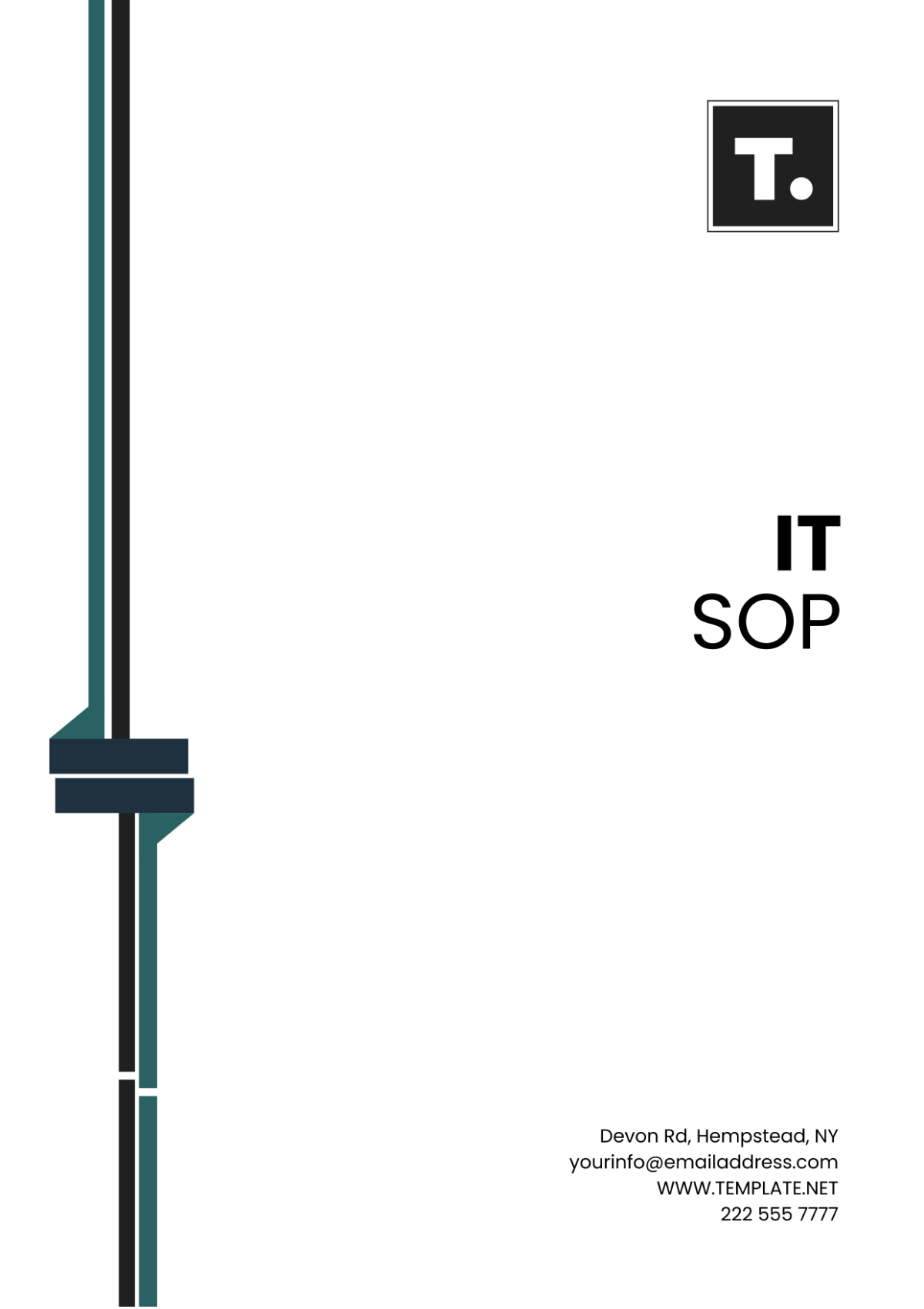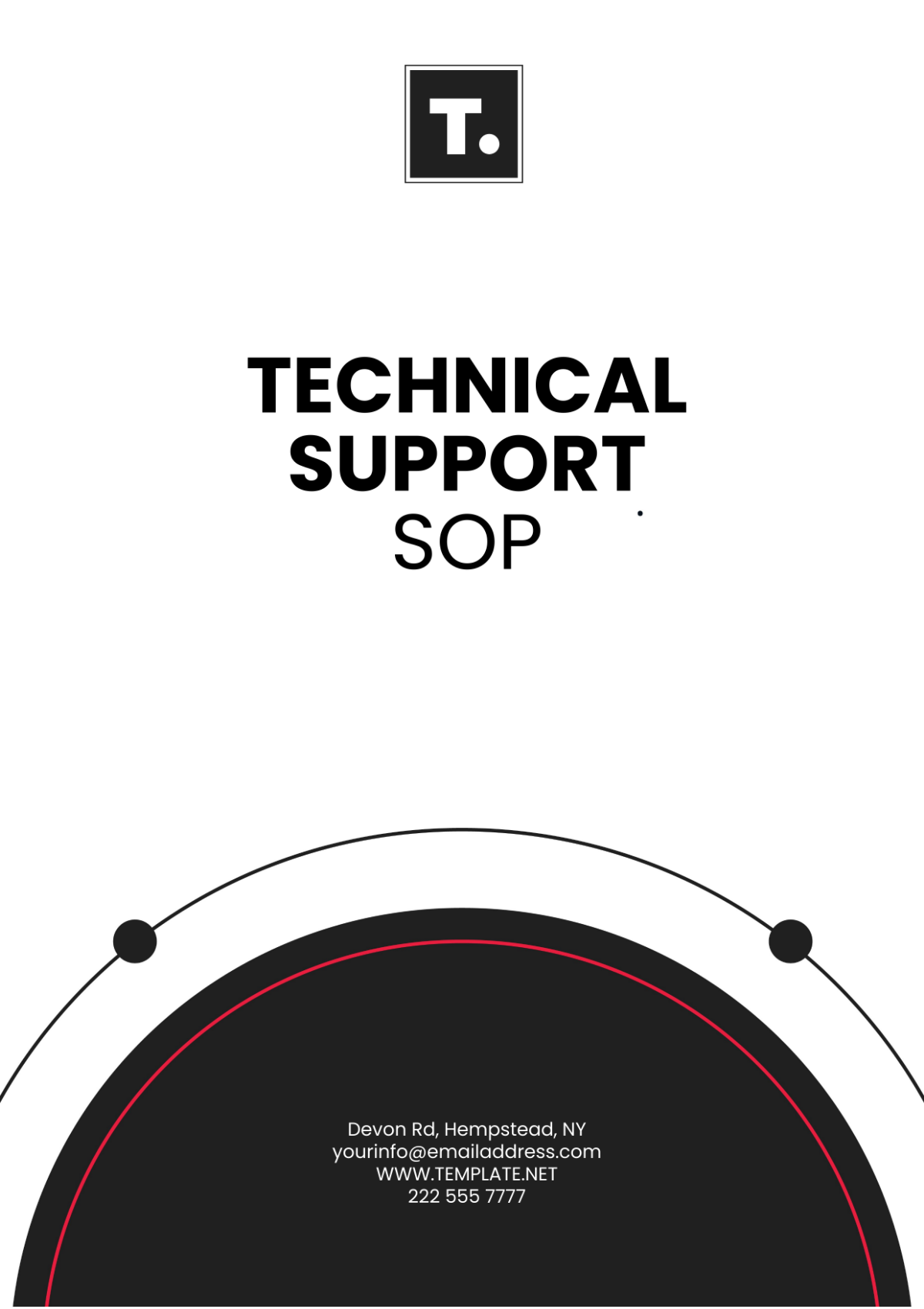INCIDENT RESPONSE STANDARD OPERATING PROCEDURE (SOP)
Written/Issued by: [YOUR COMPANY NAME]
Company Address: [YOUR COMPANY ADDRESS]
Contact Information: [YOUR COMPANY EMAIL], [YOUR COMPANY NUMBER]
I. Purpose
This SOP serves as a comprehensive guide to effectively manage and respond to various incidents that may arise within [Your Company Name]. By providing a structured and organized approach, this SOP aims to minimize potential risks, ensure the safety and security of personnel and assets, and maintain business continuity.
II. Scope
This SOP applies to all departments, employees, contractors, and stakeholders affiliated with [Your Company Name]. It encompasses incident response activities across all levels of the organization, including incident identification, assessment, response, mitigation, recovery, and post-incident analysis.
III. Responsibilities
In the event of an incident, clear roles and responsibilities are crucial for a coordinated and efficient response. The following outlines the key responsibilities:
3.1 Incident Response Team (IRT)
Comprising designated personnel from various departments, the IRT is responsible for promptly responding to incidents, coordinating actions, and communicating updates throughout the incident lifecycle.
3.2 Department Heads/Managers
Department heads or managers are responsible for ensuring that their respective teams are trained in incident response procedures, reporting incidents promptly, and collaborating with the IRT as needed.
3.3 IT Security Team
The IT security team plays a critical role in managing cybersecurity incidents, implementing protective measures, conducting forensic analysis, and mitigating potential risks to data and systems.
3.4 Safety Officers
Safety officers oversee the response to safety-related incidents, such as accidents, injuries, or hazardous material spills, ensuring the safety of personnel, implementing evacuation procedures if necessary, and coordinating with emergency services.
3.5 Legal/Compliance Team
The legal and compliance team guides regulatory requirements, legal implications, and risk management strategies during incident response, ensuring that actions taken align with legal and ethical standards.
3.6 Communications Team
The communications team is responsible for internal and external communication during incidents, including notifying stakeholders, issuing public statements (if required), and managing media inquiries to maintain transparency and trust.
3.7 HR Department
The HR department plays a supportive role in incident response, providing assistance to affected employees, addressing HR-related concerns, and ensuring employee well-being throughout the incident.
IV. Procedure
Incident Identification: Any employee who identifies or suspects an incident must immediately report it to the designated Incident Response Team (IRT) or the responsible department.
Incident Assessment: Upon receiving a report, the IRT or responsible department will conduct a preliminary assessment to determine the nature, severity, and potential impact of the incident.
Incident Categorization: Based on the assessment, incidents will be categorized into predefined categories (e.g., cybersecurity, safety, medical, and environmental) to streamline response efforts and prioritize actions.
Incident Response Plan Activation: The IRT or responsible department will activate the appropriate incident response plan tailored to the specific incident category, ensuring that predefined procedures and protocols are followed.
Response and Mitigation: The IRT, in collaboration with relevant departments, will execute response and mitigation strategies as outlined in the incident response plan. This may include containment measures, remediation actions, resource allocation, and communication plans.
Recovery and Restoration: Once the immediate threat is mitigated, efforts will focus on restoring normal operations, systems, and services. The IT team will conduct recovery procedures, data restoration (if applicable), and system testing to ensure functionality.
Post-Incident Analysis: After the incident is resolved, a comprehensive post-incident analysis will be conducted by the IRT and relevant stakeholders. This analysis aims to identify root causes, lessons learned, areas for improvement, and recommendations for enhancing incident response capabilities.
V. Reporting
All incidents, regardless of severity, must be documented and reported using the designated incident reporting system or form. The reporting process includes capturing incident details, actions taken, impact assessment, and any follow-up actions required.
VI. Training
Regular training and awareness programs will be conducted for all employees to ensure they are familiar with incident response procedures, their roles and responsibilities, reporting mechanisms, and escalation paths. Training sessions may include tabletop exercises, simulations, and scenario-based training to enhance preparedness and response capabilities.
VII. Review and Improvement
This SOP will undergo periodic reviews, evaluations, and updates to reflect changes in technology, regulations, best practices, and lessons learned from incidents. The Incident Response Team (IRT) and designated stakeholders will collaborate on reviewing incident response effectiveness, identifying areas for improvement, and implementing corrective actions to enhance overall resilience.
VIII. Approval
This Incident Response SOP is approved by:

[Approving Authority]
[Date of Approval].
Any revisions or updates to this SOP will be reviewed and approved by the designated authority before implementation.

















































